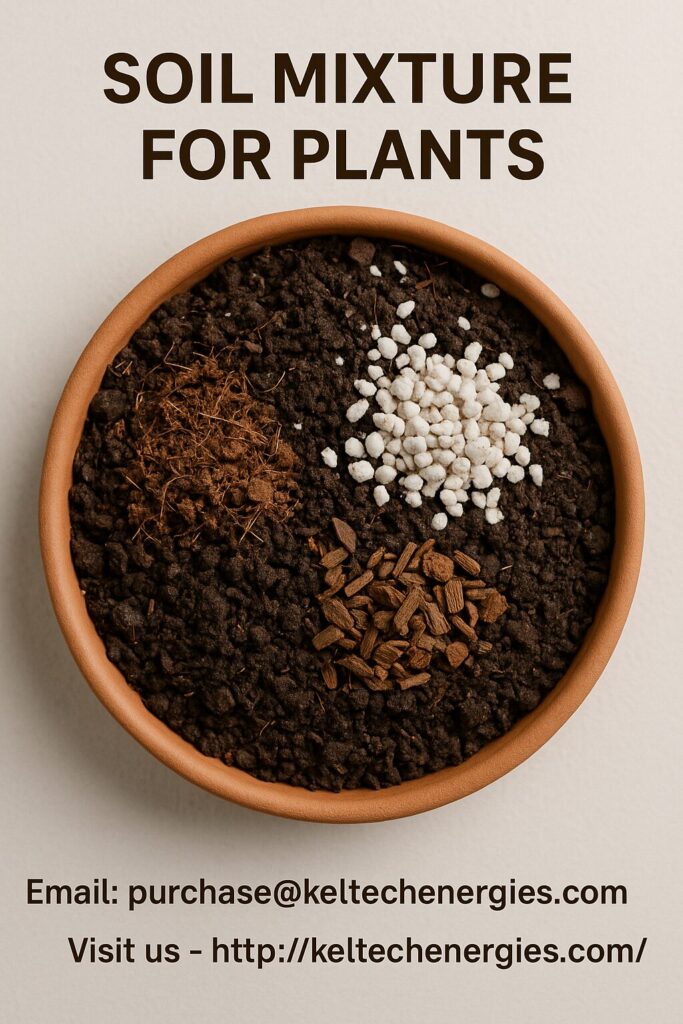
When it comes to gardening success, one of the most important yet often overlooked factors is the soil mixture for plants. While sunlight and water are crucial, it’s the soil that provides the foundation for plant roots, nutrient uptake, and overall vitality. A well-balanced soil mixture can be the difference between a thriving garden and struggling, yellowing plants.
In this guide, we’ll explore the best soil mixture for plants, what components to use, how to adjust it for different types of plants, and tips for maintaining it throughout the growing season.
Why Soil Mixture Matters
The soil mixture for plants is more than just dirt. It’s a living medium that hosts a rich ecosystem of microorganisms, nutrients, organic matter, and minerals that support healthy plant life. The right mixture helps with:
- Proper drainage and aeration
- Nutrient availability
- Root development
- Moisture retention
- Disease prevention
Neglecting soil quality or failing to mix it properly can cause root compaction, hinder growth, and ultimately harm or kill the plant.
Essential Components of a Good Soil Mixture for Plants
Creating an ideal soil mixture for plants starts with understanding the core ingredients. Most successful soil mixes contain a combination of the following:
1. Topsoil
Most soil blends begin with topsoil as their foundational component. It contains a blend of sand, silt, and clay and is typically where most organic activity occurs. However, topsoil alone often lacks the proper drainage and texture needed for potted or container plants.
2. Compost
Compost adds rich organic matter, improves soil structure, and provides a slow-release source of nutrients. It also helps beneficial microbes thrive, which supports plant health naturally.
3. Peat Moss or Coco Coir
Peat moss and coco coir are excellent for enhancing the soil’s moisture retention capacity. Peat moss is slightly acidic and great for acid-loving plants, while coco coir is a sustainable alternative with a neutral pH. Either can be used to lighten the mix and prevent compaction.
4. Perlite or Vermiculite
These inorganic materials help with drainage and aeration. Perlite is a volcanic glass that expands with heat and keeps the mix light. Vermiculite, on the other hand, retains more moisture and is better for plants that need consistent watering.
5. Sand (Optional)
Coarse sand is commonly mixed in for succulents and cacti to boost drainage, prevent root rot, and replicate arid, desert-like conditions.
Standard Soil Mixture Recipes
Depending on your gardening needs, the soil mixture for plants can vary. Here are a few general-purpose soil mix recipes:
General Potting Mix (for most houseplants):
- 2 parts peat moss or coco coir
- 1 part perlite
- 1 part compost
Succulent and Cactus Mix:
- 2 parts coarse sand
- 1 part potting soil
- 1 part perlite
Vegetable Garden Mix:
- 1 part topsoil
- 1 part compost
- 1 part peat moss
- A handful of organic fertilizer
Customizing your soil mixture for plants based on the species and environmental conditions will lead to better results.
Tailoring Soil Mix for Specific Plants
Not all plants have the same soil requirements. Consider these tailored guidelines for various types of plants :
- Tropical Plants like Monstera or Philodendrons prefer well-aerated soil with moisture retention. A balanced mix of coco coir, compost, and perlite in equal portions works well.
- Herbs such as basil and parsley do best in nutrient-rich but light soil. A mix of topsoil, compost, and a bit of sand will do the trick.
- Flowering Plants need a soil mix with good drainage and lots of nutrients. Blend in compost along with slow-release fertilizers for sustained nourishment.
- Orchids and some epiphytes need special orchid bark or moss-based mixtures, as they don’t grow in traditional soil at all.
Tips for Maintaining a Healthy Soil Mixture
Even the best soil mixture for plants can degrade over time. Follow these practices to maintain your soil mixture at its best:
- Refresh Annually: Repot indoor plants or amend outdoor soil each growing season.
- Avoid Overwatering: Too much water can compact soil and suffocate roots. Use pots with drainage holes.
- Add Organic Matter: Topdress with compost or worm castings regularly to replenish nutrients.
- Watch for Pests: Healthy soil discourages pests, but over-fertilization or soggy conditions can attract them.
Conclusion
A carefully crafted soil mixture for plants is essential for robust, healthy growth. Whether you’re nurturing houseplants, cultivating a vegetable garden, or experimenting with succulents, the right soil mixture will ensure your plants have the foundation they need to thrive.
Start with the basics, adjust for specific plant needs, and maintain the mix with good practices. Your plants will thank you with vibrant leaves, colorful blooms, and bountiful harvests.















